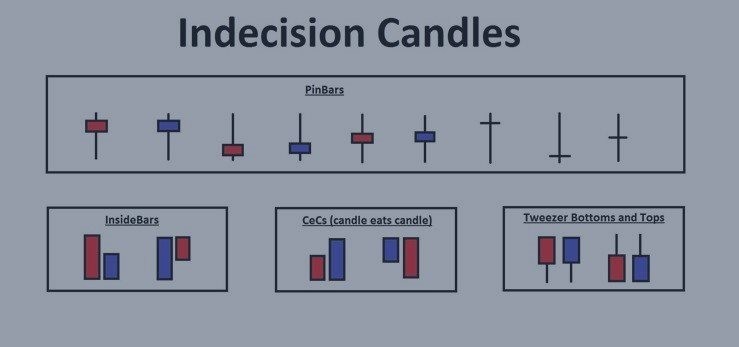- What is price action trading?
- The basics of reading charts
- Support and resistance
- Basic set-ups and stop placement
- Two examples of trades from the forex market
What is Price Action
Price action is a particular methodology employed by traders, based on the observation and interpretation of price action, usually through the use of candlestick or bar charts. The price action style of trading is usually characterized by clean charts, without indicators, with the explanation that indicators are themselves interpretations of the historical movements of price, which don't contain any information or predictive power that isn't available from the charts themselves. Nonetheless, some traders include basic indicators, such as exponential moving averages or average true range to augment their charts or to provide confluence. The attitude of the price action trader is that the interpretation of price movements can provide an edge, a possibility of being more right than wrong in their predictions about the future behavior of price.
The basics of reading candles and charts
Since candlestick and bar charts are the fundamental interface of the price action trader, the most basic unit is the candle or bar itself. Candles sum up the price action over a set period of time: on a 5 minute chart, each candle represents 5 minutes of price behavior, whereas on a daily chart, only one candle is produced per day. The body of the candle constitutes the range between the open price and close price, whereas the wicks or shadows of the candle indicate the high and low over that period of trading. Various color schemes are used to determine whether the price movement represented by the candle is bullish (increasing in price) or bearish (decreasing in price); bullish candles are usually white, blue, or green, whereas bearish candles are usually black or red.
- Longer candle bodies demonstrate strong momentum and decisive market behavior in the movement from open to close; longer shadows, however, demonstrate increased volatility, since some prices were reached during the time period but ultimately excluded from the range between open and close.
- Smaller candles can indicate the market's indecision, disinterest, or a balance between bullish and bearish forces.
Support and resistance lines are typically horizontal, but when they are diagonal along a trend they are known as trend lines. The basic idea behind using support and resistance effectively in a trading range is to buy at the support level and sell at resistance in an uptrend, or to sell at resistance and buy at support in a downtrend; so, we're not necessarily hoping for a break-out through the established levels, because a break-out means that the market isn't behaving predictably enough to allow for safe bets on its future performance. Instead, the most conservative or reliable trades are those that occur as the market fluctuates between identifiable support and resistance levels, allowing you, in an uptrend, to buy when a retracement of bearish leg has brought prices down to a support level, and then sell when price returns to the resistance level, or, in a downtrend, to sell when price is maxed out at a reliable resistance level. The reason we are looking to buy in an uptrend and sell in a downtrend is that price action trading is all about playing the odds, so trading with the trend rather than against it is usually a better idea since a trend is statistically more likely to continue than to reverse.
Basic Set-ups and Stop Placement
Most price action traders place buy or sell stop orders with a per-determined stop loss level, and a take profit or target level. The buy or sell stop sets the level that price much reach for the order to be filled; the stop loss level sets the margin of loss that a trader will accept before closing the position; the take profit level sets the level at which to automatically close a successful position. The buy or sell stop, or entry level, is typically set at a significant support or resistance level so that it will only be filled when price has broken definitively in the desired direction; by setting strategic entry levels in their orders, traders can ensure that they enter trades with the momentum of the market.



